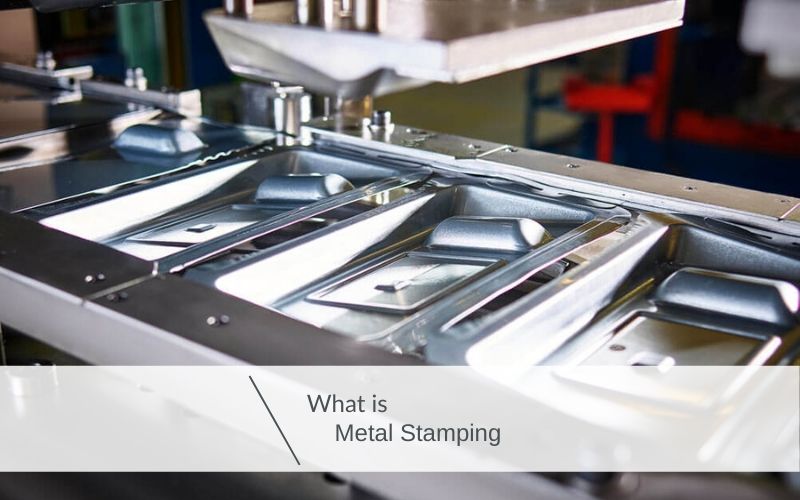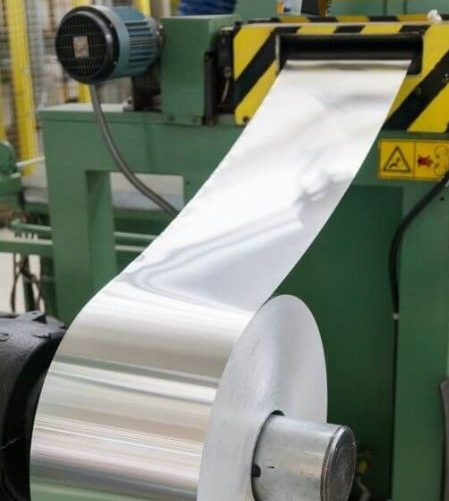Metal Stamping: Innovations Driving Market Development
Metal Stamping: Innovations Driving Market Development
Blog Article
Unleashing the Possible of Metal Stamping: Professional Tips and Best Practices Revealed
In the world of metal stamping, where accuracy and efficiency reign supreme, the mission to optimize processes and unlock hidden potentials is a continuous search. As we browse with the complex globe of metal stamping, a closer look at the ins and outs of tooling style, product choice, manufacturing efficiency, top quality control, and arising fads guarantees a treasure chest of insights waiting to be unearthed.
Tooling Layout Optimization
Maximizing tooling design is important for enhancing performance and accuracy in metal marking processes. A well-thought-out tooling style can substantially affect the high quality and cost-effectiveness of metal marking procedures. By meticulously taking into consideration elements such as material selection, pass away configuration, and component geometry, suppliers can enhance production procedures and improve overall item quality.
One secret facet of tooling layout optimization is selecting one of the most suitable materials for the dies and punches made use of in the marking process. Products with high wear resistance and toughness are preferred to ensure long life and decrease tooling upkeep needs. Furthermore, die arrangement plays a vital function in accomplishing uniformity and consistency in stamped parts. Proper die style can assist protect against problems such as wrinkling, tearing, and excessive springback, leading to greater production yields and reduced scrap rates.
Furthermore, enhancing component geometry via tooling style can assist reduce material waste and manufacturing time. By carefully forming punches and passes away to match the desired part requirements, producers can attain tighter tolerances and enhanced component high quality. Overall, investing time and resources in enhancing tooling design can cause significant lasting advantages for metal marking operations.

Product Selection Approaches
Tactically picking materials for steel stamping tooling is critical for making certain sturdiness and efficiency in manufacturing processes. When choosing products for steel stamping applications, a number of vital factors need to be taken into consideration.
One more important factor in product selection is the anticipated manufacturing volume - Metal Stamping. For high-volume production runs, tooling materials with premium wear resistance and durability, such as device steels or carbide, are often chosen to hold up against the roughness of continuous marking operations
Moreover, the intricacy of the marking style and the needed precision likewise play a considerable duty in material choice. For detailed stamping patterns or limited resistances, materials with high thermal conductivity and outstanding machinability, like beryllium copper or tool steel alloys, might be preferable to attain the preferred results.
Production Performance Strategies
To enhance making outcome and minimize manufacturing prices, applying effective methods in metal marking processes is crucial. One essential method for boosting manufacturing performance is investing in automation. Automated metal stamping equipments can perform jobs with accuracy, consistency, and at a much faster rate than manual labor, bring about enhanced performance and lowered cycle times. In addition, applying predictive maintenance practices can help avoid unanticipated downtime by determining potential devices failures before they happen. By on a regular basis checking machine performance and attending to issues proactively, makers can maximize production timetables and minimize disturbances.
An additional strategy to boost manufacturing efficiency is through continuous process enhancement. Carrying out normal audits and efficiency analyses can help identify bottlenecks, inefficiencies, and read this article areas for enhancement within the steel marking procedure. By assessing information and responses from these analyses, manufacturers can execute targeted remedies to streamline procedures, boost throughput, and make best use of total performance.
Furthermore, taking on lean manufacturing concepts, such as five approach and Kanban systems, can assist get rid of waste, improve process, and boost total performance in steel marking procedures. By promoting a society of continuous renovation and encouraging employees to add concepts for effectiveness gains, makers can unlock the full potential of their metal marking procedures.
Quality Assurance Procedures
Building on the foundation of effective manufacturing methods in metal marking procedures, making sure stringent high quality control measures is essential for preserving item criteria and client complete satisfaction. Quality control in metal stamping involves organized inspection, screening, and monitoring of the manufacturing refines to recognize and correct any type of deviations or problems that can endanger the end product's stability (Metal Stamping). Executing measures such as normal tools maintenance, in-process inspections, and comprehensive screening of finished parts can help find problems at an early stage and prevent expensive rework or product remembers
Normal audits and testimonials of top quality procedures can aid identify areas for improvement and ensure uniformity in product top quality. By fostering a culture of top quality awareness amongst staff members and offering ample training on high quality control procedures, producers can boost overall product reliability and brand name track record.

Innovative Metal Stamping Technologies
Advancements in steel marking innovations have actually changed the manufacturing market, boosting efficiency and precision in the manufacturing process. One of the most substantial technologies is the growth of servo press technology. Servo presses use exceptional control over the stamping procedure, enabling for modifications in rate, dwell, my response and force time with remarkable precision. This level of control leads to better parts, decreased downtime for tooling adjustments, and boosted total efficiency.

Furthermore, the fostering of additive manufacturing techniques in metal marking, such as 3D printing of die elements, has streamlined the tooling design and production process. This approach enables greater layout flexibility, quick prototyping, and cost financial savings in tooling production. By leveraging these innovative innovations, suppliers can open new degrees of effectiveness, high quality, and competition in the steel marking sector.
Conclusion
In conclusion, the optimization of tooling design, tactical material selection, efficient production techniques, quality assurance procedures, and ingenious modern technologies are crucial for unleashing the complete possibility of steel marking. By carrying out these finest methods and skilled ideas, suppliers can boost performance, raise top quality, and remain competitive in the metal stamping industry. It is essential for companies to constantly examine and enhance their processes to achieve success in this field.
As we navigate through the elaborate world of steel marking, a more detailed look at the intricacies of tooling design, material selection, production efficiency, quality control, and emerging trends promises a treasure chest of understandings waiting to be unearthed. A well-balanced tooling design can substantially impact the quality and cost-effectiveness of metal marking procedures.Building on the foundation of effective manufacturing techniques in metal stamping processes, ensuring you can try these out strict high quality control procedures is necessary for keeping item requirements and client fulfillment. Quality control in metal marking includes methodical assessment, screening, and tracking of the production refines to determine and rectify any kind of variances or defects that can jeopardize the final item's stability.In final thought, the optimization of tooling design, calculated material selection, effective production strategies, high quality control steps, and innovative modern technologies are essential for letting loose the full potential of steel marking.
Report this page